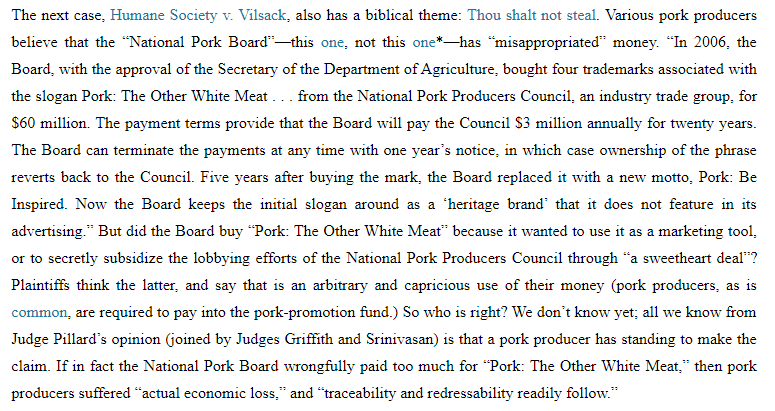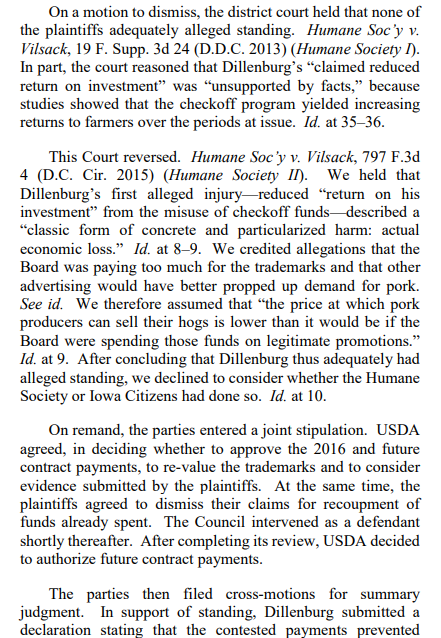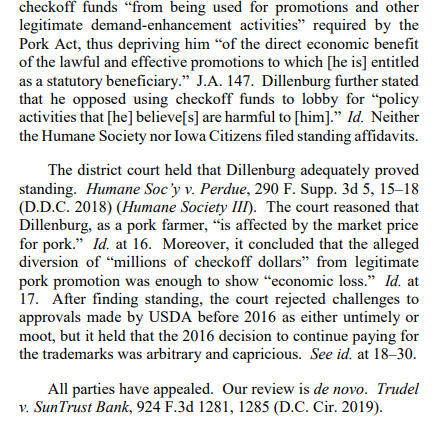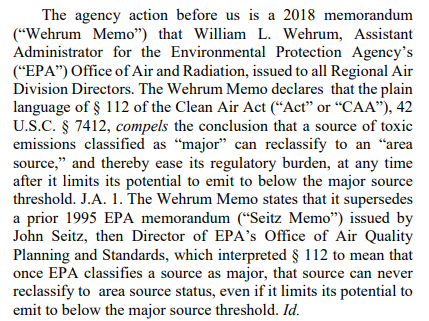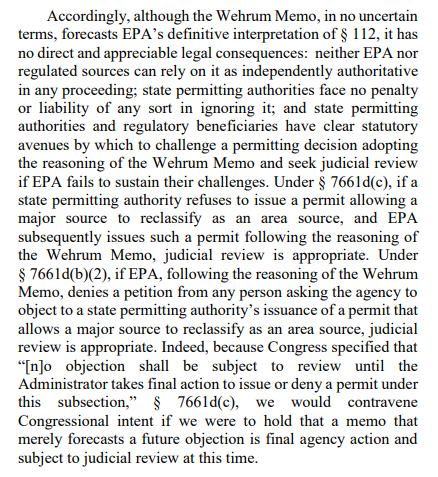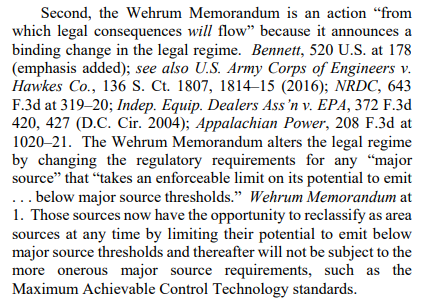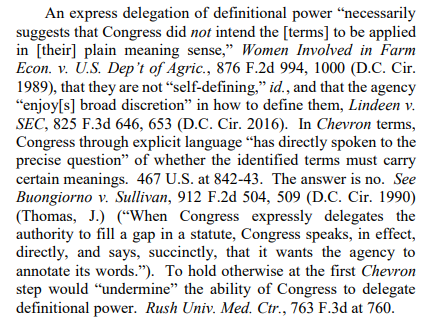D.C. Circuit Review – Reviewed: Will There be a Year Six?
Nope! But there will be a Year Five.
I started D.C. Circuit Review — Reviewed in August 2015. Each August I ask myself if I’m ready for another year of weekly posts. On one hand, I still enjoy the opinions; the D.C. Circuit gets fascinating cases. And I appreciate chatting with nice folks who also follow administrative law, including my many wonderful research assistants. On the other hand, however, writing posts takes a fair bit of time and I’m busier now than I was in 2015. Plus when I started, I was the only game in town. Now, if you want to follow the D.C. Circuit, you can read D.C. Circuit Breaker or Lindsay Harrison‘s Twitter feed. Candidly, moreover, I also worry that the quality of my posts is declining; I’ve limited how much time I will allow myself to spend each week. The upshot is that for the last couple of years I’ve wondered whether it is time to move on to something else.
I’ve now decided to end the series … in a year. Five is a nice, round number. And I hope I still have a few more things to say.
If you want to know why I’m still interested in the D.C. Circuit after about 850 cases,* read this week’s opinions.
For old time’s sake, let’s start with Humane Society v. Perdue. We’ve seen this case before. In fact, it was in the first D.C. Circuit Review — Reviewed post (well, at least the first real one). Here was my summary then:
Well, it turns out that there isn’t standing. Here is how Judge Katsas — joined by Judges Griffith and Rao — explains the current iteration of the case:
There was enough of an allegation to survive a motion to dismiss, but not to withstand summary judgment, where actual evidence is required. As Judge Katsas put it, “while the plaintiffs’ burden has grown, their allegations have shrunk.” If you have a standing issue in the D.C. Circuit — and if you have a case in the D.C. Circuit, you probably have a standing issue — you should give this one a read.
The most important case this week, at least doctrinally, is California Communities Against Toxics v. EPA. Judge Wilkins (joined by Judge Silberman) opened his opinion with a number of questions: “This case asks us to determine the nature of an agency action, an inquiry that — paradoxically — is quotidian but abstruse. When we are confronted with agency action, the litany of questions is by now very well-rehearsed: Is it final? Is it ripe? Is it a policy statement? Is it an interpretive rule? Is it a legislative rule? Despite the clarity of these questions, however, predictable answers have eluded courts and commentators.” The Court thus decided to act “with our eye toward the ‘continuing project’ of clarifying this ‘byzantine’ area of the law.”
The case is about an EPA memorandum:
Final agency action? No: “We express no opinion as to whether the Wehrum Memo is prudentially ripe, an interpretive rule or a legislative rule, or on the merits of its interpretation of § 112. In holding that the Wehrum Memo is not final, we emphasize two points. First, when assessing the nature of an agency action (including whether it is final), courts should resist the temptation to define the action by comparing it to superficially similar actions in the caselaw. Rather, courts should take as their NorthStar the unique constellation of statutes and regulations that govern the action at issue. Second, although all legislative rules are final, not all final rules are legislative, and the finality analysis is therefore distinct from the test for whether an agency action is a legislative rule.” If you study, teach, or practice administrative law, that paragraph should make you sit up straight. I bet California Communities Against Toxics is going to be cited a lot. Read it. Lots of scholarship is cited. Lots of cases are discussed. Here is a key part of the analysis:
Judge Rogers dissented:
There is much more analysis. Read both opinions. I’m still thinking about the problem. You should too. In September, when things slow down on the D.C. Circuit, I may return to this case.
Judge Wilkins also had another major opinion, this time joined by Judges Henderson and Pillard. In American Bankers Association v. National Credit Union Administration, Wilkins applied Chevron deference to banking regulations “that make[] it easier for community credit unions to expand their geographical coverage and thus to reach more potential members.” Here is a sample of the analysis:
(An aside: I somehow doubt that today’s “Thomas, J.” has the same views on Chevron as 1990’s “Thomas, J.”)
An issue that I find especially interesting is the discussion of facial versus as-applied challenges to regulations as opposed to statutes. Attention students: this is an area of law merits more analysis, in particular because regulations are executive acts, rather than legislative acts. Should that change how we think about facial versus as-applied challenges? Maybe consider thinking through the implications of Nicholas Rosenkranz‘s distinction between objects and subjects.
In terms of practical effects, the biggest case this week may be Murray Energy Corporation v. EPA. I base that guess on the fact that there are more than three pages of lawyers listed, and the Court decided it as a complex case — thus a per curiam panel of Judges Griffith, Pillard, and Wilkins. If you practice environmental law, you have to read this one, which addresses “various challenges to the Environmental Protection Agency’s 2015 revisions to the primary and secondary national ambient air quality standards for ozone.” There are 50 (dense) pages here. The discussion of “background ozone” is definitively worth a read, as is the short discussion of the nondelegation doctrine. Here is a safe bet: the “grandfathering” discussion will also get a lot of attention.
Finally, we come to United States v. Burden. It was argued by the very Lindsay Harrison noted above. The case is about, inter alia, the Confrontation Clause as applied to deported witnesses and willfulness in the context of the Arms Export Control Act. Here is Judge Pillard’s summary (joined by Judge Henderson):
Judge Rogers agreed with almost all of the Court’s analysis, but she disagreed about willfulness.
That’s the week. And now it is time for Year Five.
* Per Westlaw, the D.C. Circuit has published 866 decisions since August 15, 2015.
D.C. Circuit Review – Reviewed is designed to help you keep track of the nation’s “second most important court” in just five minutes a week.



